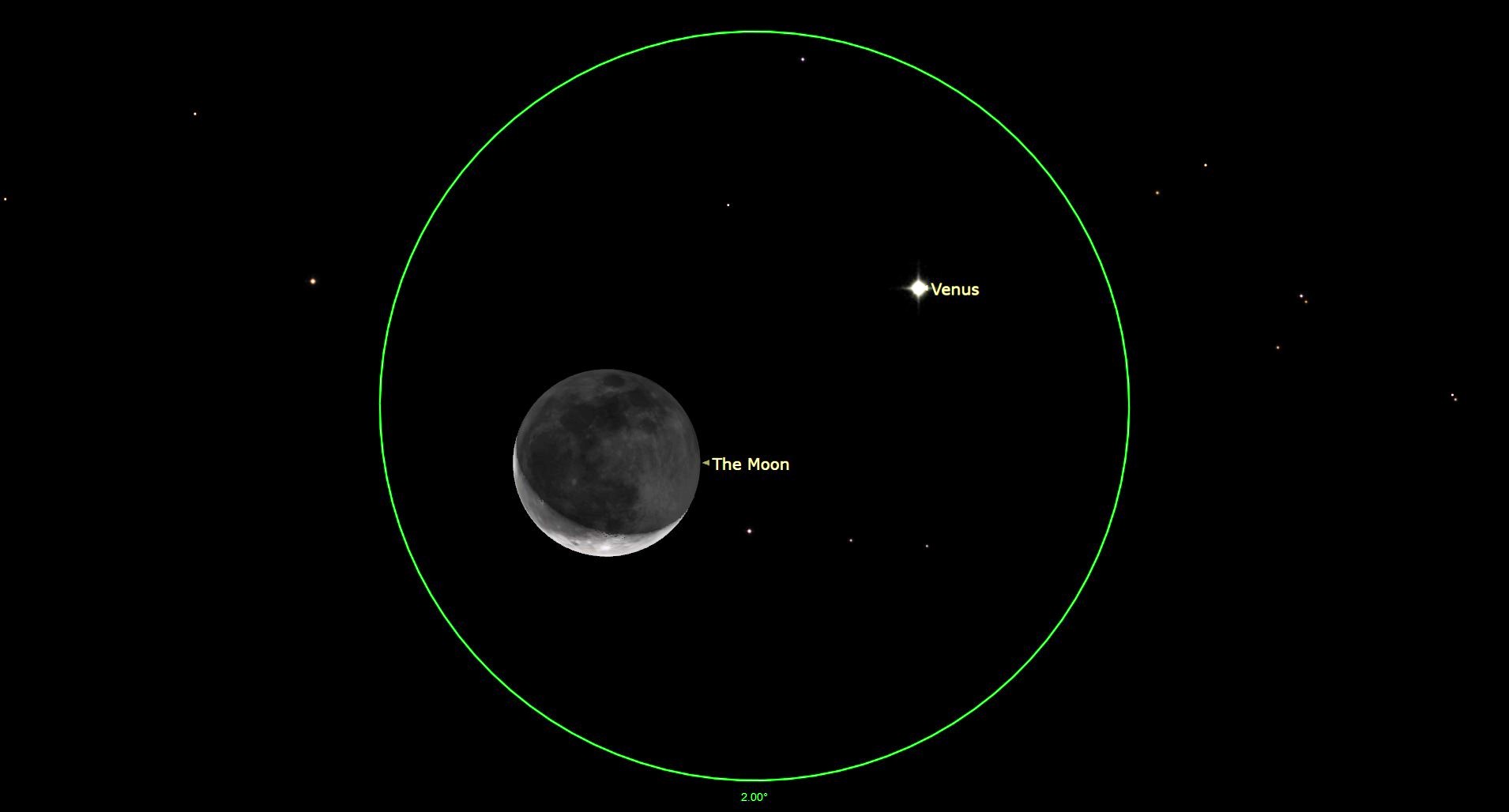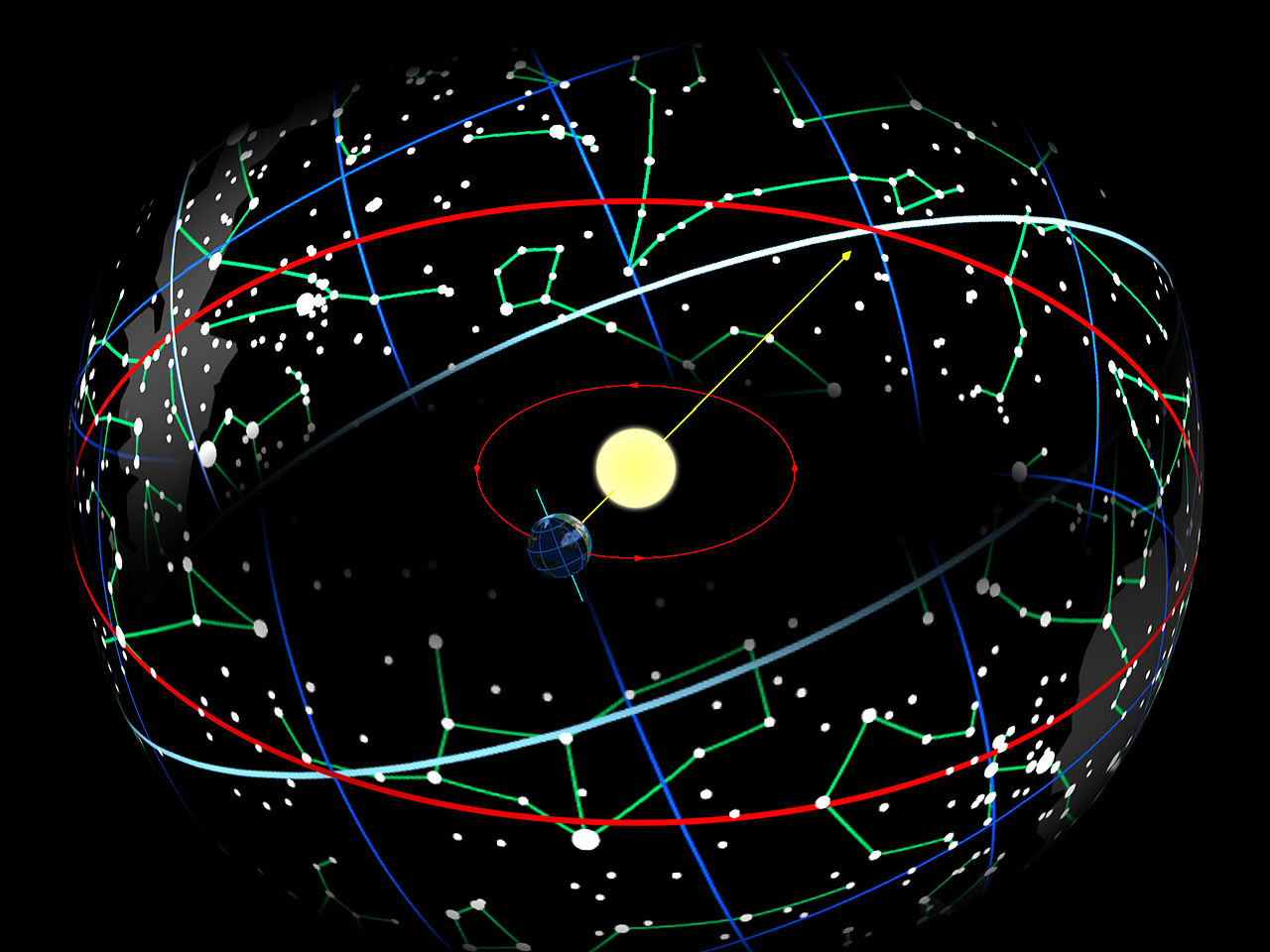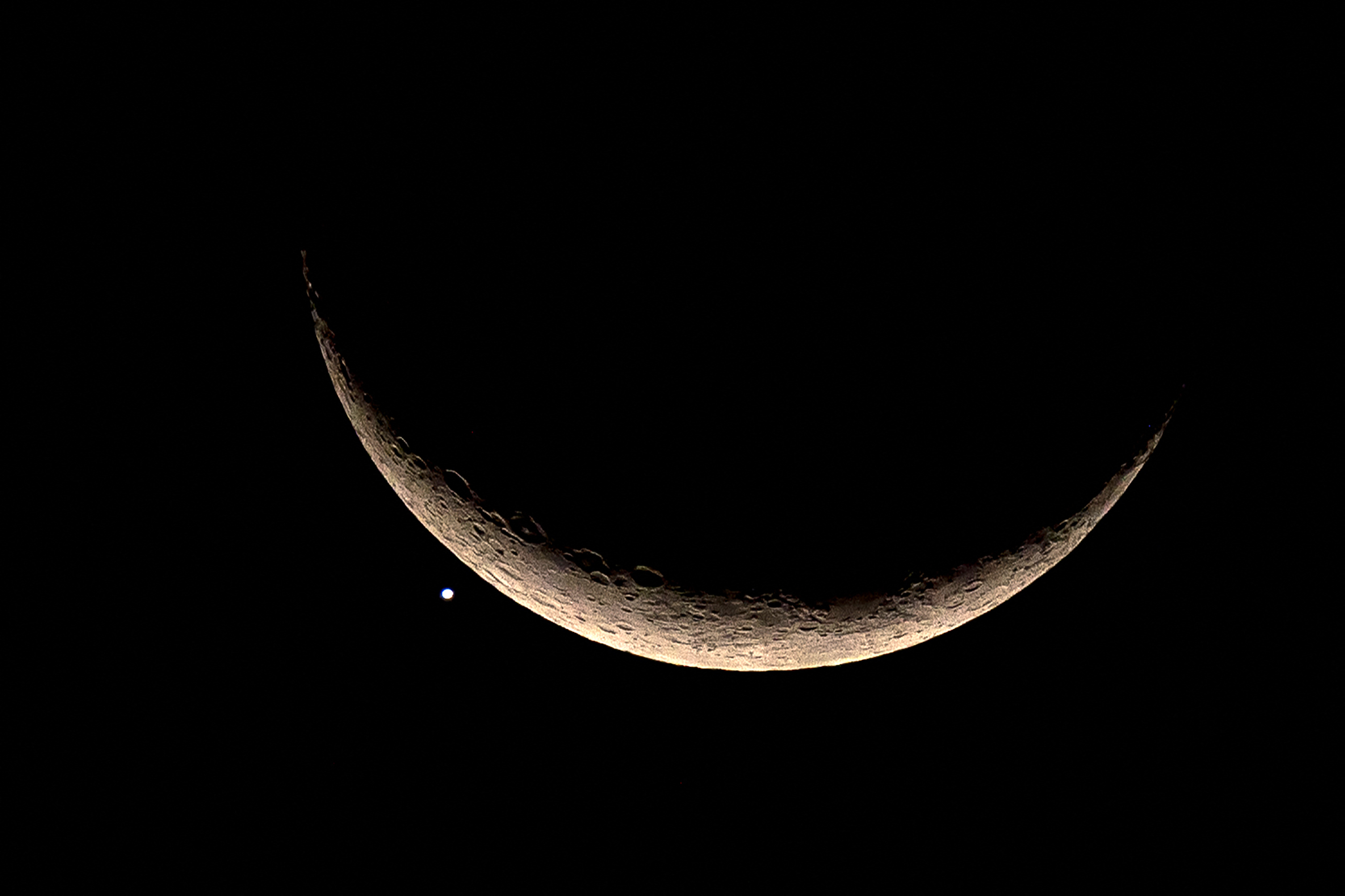
An eye-catching pairing of the two brightest objects in the night sky — dazzling Venus and a lovely waning crescent moon — will be the chief celestial attraction in the predawn morning sky on Thursday morning, Nov. 9.
If you can, you should make it a point to set your alarm clock for around 5 a.m. local time and head outside to a location with a clear and unobstructed view of the east-southeast sky. At that hour, on this particular morning, hanging about one-quarter of the way up in the sky, you will see a waning crescent moon, 15% illuminated by the sun, and sitting less than a degree to its right will be Venus, blazing at magnitude -4.4, or 15 times brighter than Sirius, the brightest star.
Those on the East Coast will see the moon and planet at their closest, since by the time the pair rises for the West Coast, the moon will have moved a little farther away from Venus.
Related: Night sky, November 2023: What you can see tonight [maps]
A celestial head-turner!

Want to see great sky sights up close? We recommend the Celestron Astro Fi 102 as the top pick in our best beginner's telescope guide.
This "dynamic duo" will be an eye-catching sight that will draw the attention of even those who normally would not cast more than a casual glance at the sky. Pre-sunrise commuters who regularly travel in an easterly direction, will have both moon and planet looming directly ahead of them on route to work or school.
It is also quite possible that you may be able to see the full globe of the moon, its darkened portion glowing with a bluish-gray hue interposed between the sunlit crescent and not much darker sky. This vision is sometimes called "the old moon in the young moon's arms." Leonardo da Vinci (1452-1519) was the first to recognize it as Earthshine. That faint bluish-gray light is light from the Earth reflected back to the moon. The Earth's light of course is reflected sunlight, so earthshine is really sunlight which is reflected off Earth to the moon and reflected back to Earth.
This effect is particularly striking when viewed through binoculars; it imparts a three-dimensional effect of the moon appearing as a weirdly illuminated ball, hanging next to the brilliant jewel that is Venus.
The moon hides Venus
For those few inhabitants who reside in the far-northern sections of Nunavut, Canada or central and northern Greenland, the moon will be seen to cross in front of Venus and hide it for a short while — what astronomers refer to as an occultation. That effect will also be visible across much of Europe and a slice of northern Africa, except for these regions this "eclipse of Venus" takes place after sunrise, during the daytime.
Planetary peregrinations
A wide variety of different conjunctions and configurations involving the moon and planets typically occur during the course of any given year. From our Earthly vantage point, we can readily observe Mercury, Venus, Mars, Jupiter and Saturn with our unaided eyes as they revolve around the sun. Each of these planets appears to move against the starry background at their own speeds and along their own tracks. It is obvious that since they are constantly moving at different speed, the positions of all five planets at any particular moment in time is unique to that particular moment.
All of the naked eye planets — and the moon as well — closely follow an imaginary line in the sky called the ecliptic. The ecliptic is also the apparent path that the sun appears to take through the sky as a result of the Earth's revolution around it.
Technically, the ecliptic represents the extension or projection of the plane of the Earth's orbit out towards the sky. But since the moon and planets move in orbits, whose planes do not differ greatly from that of the Earth's orbit, these bodies, when visible in our sky, always stay relatively close to the ecliptic line. Twelve of the constellations through which the ecliptic passes form the zodiac; their names which can be readily identified on standard star charts, are familiar to millions of horoscope users who also would be hard pressed to find them in the actual sky.

But will it have any effect on Earthly affairs?
Ancient humans probably took note of the fact that the planets — themselves resembling bright stars — had the freedom to wander in the heavens, while the other "fixed" stars remained rooted in their positions. This ability to move, seemed to have an almost magical, god-like quality. And evidence that the planets came to be associated with the gods, lies in their very names, which represent ancient deities. The skywatchers of thousands of years ago must have deduced that if the movements of the planets had any significance at all, it must be to inform those who could read celestial signs of what the fates held in store. Indeed, even to this day, there are those who firmly believe that the changing positions of the sun, moon and planets can have a decided effect on the destinies of individuals and nations on the Earth.
But as for any chance that the impending tight conjunction between Venus and the moon might have any influence on our lives in any way, we at Space.com say forget it! No astrologer can predict when a specific event, good or bad, will occur on Earth resulting from planetary alignments or any other celestial configuration.
In fact, that's what a lot of people seem to do after a beautiful celestial tableau such as what will appear in our early morning sky on Thursday seem to do: They forget about it.

The planets in the night sky are always shifting in and out of celestial liaisons. And yet "astronomical amnesia" allows many to forget the last time we saw them assemble for such a performance. Many also usually fail to recall that none of the influential magical thinking attributed to the previous event ever materialized.
In fact, probably the only thing that this impending moon-Venus get together will cause, is a bevy of predawn phone calls to the news desks of radio and television stations, inquiring as to "What is that huge star hovering close to the moon?"
If you want to get an up-close look at the moon during its meet-up with Venus or any other time, our guides to the best telescopes and best binoculars are a great place to start.
And if you're looking to take photos of the moon or the night sky in general, check out our guide on how to photograph the moon or how to photograph planets, as well as our best cameras for astrophotography and best lenses for astrophotography.
Joe Rao serves as an instructor and guest lecturer at New York's Hayden Planetarium. He writes about astronomy for Natural History magazine, the Farmers' Almanac and other publications.







